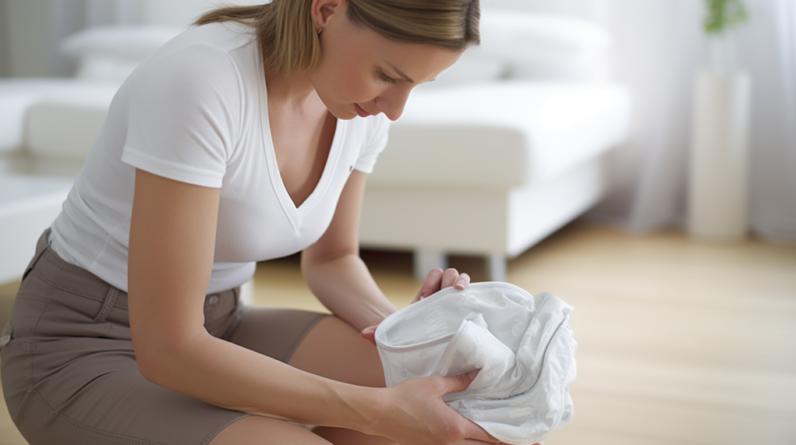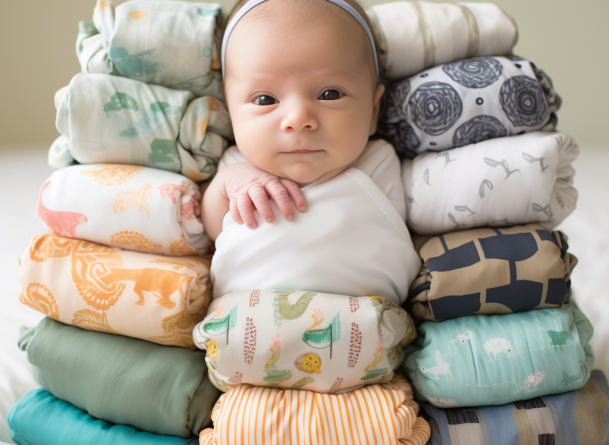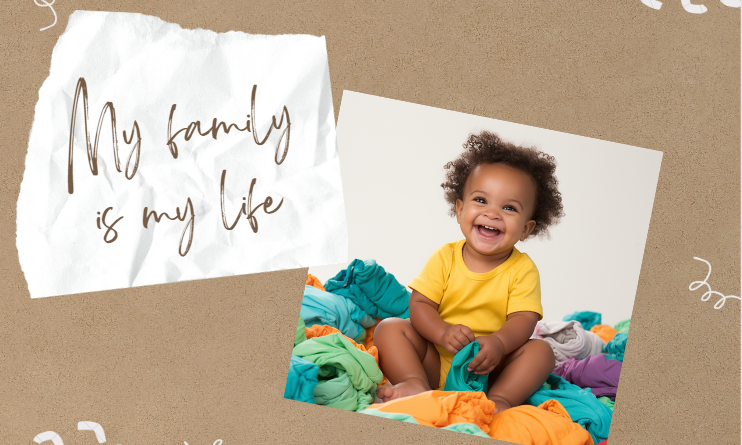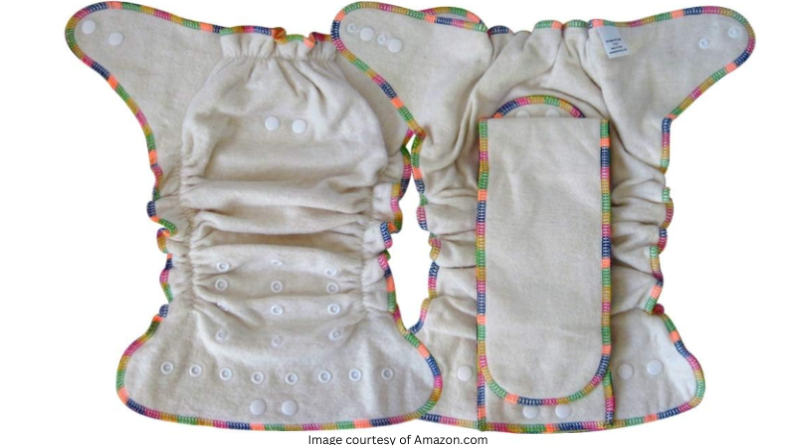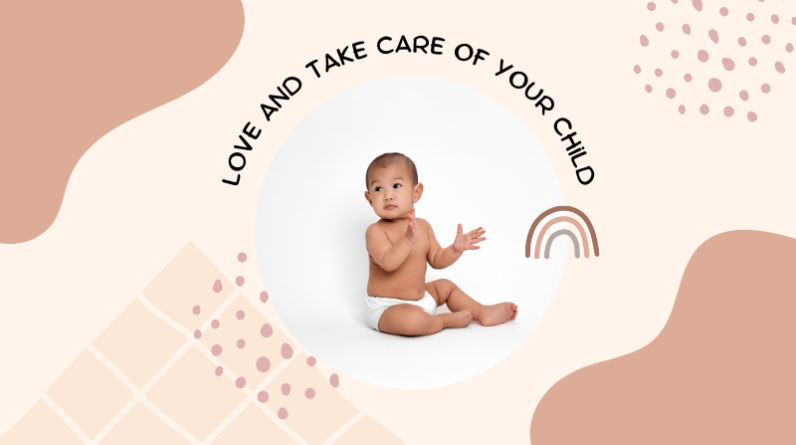
Cloth diapers have been used for centuries as an eco-friendly and cost-effective alternative to disposable diapers. They consist of soft and breathable materials, such as cotton, bamboo, or hemp, that are designed to be washed and reused multiple times. By choosing Snapless cloth diapers, parents can reduce their environmental impact, save money, and provide a comfortable and healthy diapering option for their babies.
Definition and explanation of Snapless cloth diapers:
Snapless cloth diapers are reusable diapering options for babies made of soft and absorbent materials like cotton, bamboo, or hemp. Unlike traditional cloth diapers, snapless cloth diapers don’t have built-in snaps or fasteners. Instead, they require folding and securing with diaper pins, Snappi fasteners, or diaper covers. These diapers offer a customizable fit, adjustable absorbency, and are cost-effective and eco-friendly alternatives to disposable diapers. They provide comfort, breathability, and can be reused for multiple children, making them a popular choice among environmentally conscious parents.
Importance of using Snapless cloth diapers:
- Comfort and Health: Snapless cloth diapers are made from soft and breathable materials, reducing the risk of diaper rash and skin irritations. They provide a natural and comfortable option for your baby’s delicate skin.
- Cost-effectiveness: Snapless cloth diapers are a cost-effective choice in the long run. While the upfront investment may be higher compared to disposable diapers, they can be reused for multiple children, leading to significant savings over time.
- Environmental Sustainability: By choosing snapless cloth diapers, you contribute to reducing waste generation. Disposable diapers contribute to overflowing landfills and take hundreds of years to decompose. Opting for reusable snapless cloth diapers helps minimize environmental impact and promotes a sustainable future.
- Customizable Absorbency: Snapless cloth diapers allow for flexible absorbency options. You can add or remove inserts or boosters to tailor the diaper to your baby’s needs, ensuring optimal absorption and reducing the chances of leaks.
- Early Potty Training: Cloth diapered babies often have an increased awareness of wetness, which can contribute to earlier potty training. Snapless cloth diapers facilitate the transition to underwear, as they mimic the feeling of wetness more effectively than highly absorbent disposable diapers.
Overall, using snapless cloth diapers is a conscious choice that benefits your baby’s comfort, your wallet, and the environment. It promotes sustainability while providing a healthier and more natural diapering option for your little one.
Overview of snapless cloth diapers:
Snapless cloth diapers are a type of cloth diaper that does not have built-in snaps or fasteners. Instead, they rely on folding and fastening techniques to secure the diaper on the baby. Snapless cloth diapers offer a customizable fit, as they can be adjusted according to the baby’s size and shape. They are often praised for their versatility and simplicity, making them a popular choice among cloth diapering parents.
Tip: When considering cloth diapers, it’s important to keep in mind that every baby is different, and what works for one may not work for another. It may take some trial and error to find the perfect fit and style of cloth diapers that suits your baby’s needs and your preferences. Don’t get discouraged if it takes some time to find the right cloth diapering system for you.
Advantages of Snapless Cloth Diapers
Comfort and adjustability:
- Soft and breathable materials: Snapless cloth diapers are typically made from soft and breathable materials such as organic cotton, bamboo, or hemp. These natural fibers provide a gentle and comfortable feel against the baby’s delicate skin, reducing the risk of irritation or rashes.
- Tip: When choosing snapless cloth diapers, opt for high-quality fabrics that are known for their softness and durability. Look for certifications like Global Organic Textile Standard (GOTS) to ensure the materials are free from harmful chemicals and produced sustainably.
- Customizable fit for different baby sizes: Snapless cloth diapers offer a customizable fit, allowing parents to adjust the diaper’s size and shape according to their baby’s needs. The absence of built-in snaps provides greater flexibility in finding the perfect fit, accommodating babies of various sizes and body types.
- Tip: Experiment with different folding techniques and fastening options to find the most comfortable fit for your baby. Adjust the waist and leg openings to ensure a snug but not too tight fit to prevent leaks.
Cost-effectiveness:
- Long-term savings compared to disposable diapers: While the upfront cost of snapless cloth diapers may be higher than disposable diapers, they can save families a significant amount of money in the long run. A study published in the Journal of Environmental Planning and Management compared the costs of cloth diapers versus disposable diapers and found that cloth diapers can save families up to 40% over the diapering period (1). With proper care, snapless cloth diapers can last through multiple children, making them a cost-effective investment.
- Potential for reuse with multiple children: Snapless cloth diapers are designed to be durable and long-lasting, making them suitable for reuse with multiple children. By properly caring for and storing the diapers between children, parents can extend their lifespan and maximize their cost savings. This also contributes to reducing overall waste generation.
Eco-friendly and sustainable option:
- Reduced waste generation: One of the significant environmental advantages of snapless cloth diapers is the reduction of waste compared to disposable diapers. According to the EPA, disposable diapers make up about 2-3% of landfill waste (2). By choosing snapless cloth diapers, parents can significantly reduce the amount of diaper waste being sent to landfills.
- Lower carbon footprint: Snapless cloth diapers have a lower carbon footprint compared to disposable diapers. A Life Cycle Assessment study published in the journal Environmental Science & Technology compared the environmental impacts of cloth diapers and disposable diapers and found that cloth diapers had a significantly lower carbon footprint (3). This is due to the reduced energy and resources required for production and disposal.
Tip: To further reduce the environmental impact, consider using eco-friendly detergents for washing your cloth diapers and line-drying them whenever possible. This will help conserve energy and reduce the use of chemicals.
Features of Snapless Cloth Diapers
Absorbency:
- Different fabric options: Snapless cloth diapers come in various fabric options, each with its own absorbency level and characteristics. Common fabric choices include cotton, bamboo, hemp, and blends.
- Tip: Consider the absorbency needs of your baby when selecting the fabric. Bamboo is known for its high absorbency and natural antibacterial properties, while hemp is highly absorbent and durable.
- Layering and inserts for increased absorbency: To enhance the absorbency of snapless cloth diapers, you can use layering techniques or inserts. Layering involves folding the diaper in a way that creates additional layers of fabric in the wet zone. Inserts are separate absorbent pads or boosters that can be placed inside the diaper. These additions increase the diaper’s capacity to hold more moisture, making them suitable for heavy wetters or overnight use.
- Tip: Experiment with different combinations of layering and inserts to find the absorbency level that works best for your baby’s needs. Remember to choose inserts made from natural fibers, such as bamboo or hemp, for optimal absorbency.
Fastening options:
- Snappi fasteners: Snappi fasteners are stretchable fasteners with grippers that can hold snapless cloth diapers in place without the need for pins. They provide a secure hold and make it easier to adjust the fit of the diaper.
- Tip: When using Snappi fasteners, ensure that the fastener is properly secured and that the teeth are securely attached to the fabric. Always keep the fasteners out of reach of children to avoid accidents.
- Pins and diaper covers: Traditional diaper pins can be used to secure snapless cloth diapers, followed by using a waterproof diaper cover for added protection against leaks. This method allows for a customizable fit and provides extra security.
- Tip: When using pins, exercise caution and make sure they are securely fastened. Place your fingers between the pin and the baby’s skin to prevent accidental pricks.
- Boingo fasteners: Boingo fasteners are similar to Snappi fasteners and provide a secure hold without the use of pins. They have grippers on both ends, allowing for easy fastening of snapless cloth diapers.
- Tip: When using Boingo fasteners, ensure that the teeth are properly gripping the fabric and that the diaper is snugly secured around the baby’s waist.
Folding techniques:
- Angel fold: The angel fold involves folding the sides of the diaper towards the center, creating a rectangular shape with a thicker absorbent pad in the center. This fold provides good coverage and absorbency, making it suitable for heavy wetters.
- Bikini twist fold: The bikini twist fold is a simple yet effective folding technique where the diaper is twisted in the front, creating a snug fit around the baby’s legs. This fold is especially useful for containing messes and preventing leaks.
- Origami fold: The origami fold creates multiple layers of fabric in the front and back, offering excellent absorbency and containment. This fold is versatile and can be customized based on the baby’s needs.
- Pad fold: The pad fold involves folding the diaper into a rectangular shape, similar to a pad. This fold is quick and easy to do, making it convenient for diaper changes on the go. However, it may offer less absorbency and containment compared to other folds.
Tip: Practice different folding techniques to find the ones that work best for you and your baby. Each fold offers unique advantages, so it can be helpful to have a few different folding options in your diapering repertoire.
How to Use Snapless Cloth Diapers
Prepping and washing:
- Initial pre-washing and drying: Before using snapless cloth diapers for the first time, it is important to pre-wash them to remove any residues from the manufacturing process and increase their absorbency. Follow the manufacturer’s instructions for prepping, which typically involve washing the diapers in hot water with a small amount of detergent. After pre-washing, hang or tumble dry the diapers according to the fabric’s specific care instructions.
- Regular washing routine: Establishing a regular washing routine is crucial to maintain the cleanliness and longevity of your snapless cloth diapers. Most cloth diaper manufacturers recommend a simple washing routine that involves:
- Dry Pail Method: Store dirty diapers in a dry pail or wet bag until wash day. This method helps minimize odors and prevents the growth of bacteria.
- Pre-rinse or Pre-soak: Before the main wash, consider a pre-rinse or pre-soak cycle to help remove any solid waste or excess urine from the diapers.
- Main wash: Wash the diapers using a suitable detergent, following the manufacturer’s guidelines. Use warm or hot water for optimal cleaning. A thorough rinse cycle is essential to ensure all detergent residue is removed from the diapers.
- Drying: Line-drying snapless cloth diapers in the sun is a great way to naturally sanitize and bleach stains. However, if line-drying is not possible, tumble drying on low heat or using a drying rack indoors can also be effective.
Tip: Consult the manufacturer’s instructions and adjust the washing routine based on the specific fabric of your snapless cloth diapers. Avoid using fabric softeners, bleach, or harsh detergents, as they can reduce the absorbency and lifespan of the diapers.
Folding and fastening techniques:
- Step-by-step instructions for various folds: To effectively use snapless cloth diapers, follow these steps:
- Angel fold: Lay the diaper flat, fold the sides towards the center, and secure with your preferred fastening option.
- Bikini twist fold: Fold the diaper in half horizontally, twist the center part, and secure with your preferred fastening option.
- Origami fold: Fold the diaper into thirds, with additional folds in the front and back for more absorbency, and secure with your preferred fastening option.
- Pad fold: Fold the diaper into a rectangular shape and place inside the diaper cover or secure with your preferred fastening option.
- Demonstration of different fastening options: Depending on your preference and the diapering needs of your baby, choose from various fastening options:
- Snappi fasteners: Stretch the Snappi fastener and grip it onto the diaper, securing the diaper around the baby’s waist.
- Pins and diaper covers: Use traditional diaper pins to secure the diaper, and cover with a waterproof diaper cover to prevent leaks.
- Boingo fasteners: Attach the Boingo fasteners to the diaper, ensuring a snug fit around the baby’s waist.
Tip: When using fasteners, always ensure they are securely fastened but not too tight. Regularly check the fit and adjust as needed to prevent leaks and discomfort.
Adding absorbency:
- Understanding the need for boosters or inserts: Depending on your baby’s needs, you may need to add extra absorbency to the snapless cloth diaper. Boosters or inserts are additional absorbent pads that can be placed inside the diaper for increased absorption capacity. They are especially useful during nap time, overnight, or for heavy wetters.
- Tip: Look for boosters or inserts made from natural fibers, such as bamboo or hemp, for optimal absorbency. Consider the thickness and size of the booster to ensure a comfortable fit inside the diaper.
- Placement and layering for optimal absorbency: To maximize absorbency, place the booster or insert in the wet zone of the diaper. This is typically in the front for boys and in the middle for girls. Experiment with different layering techniques, such as placing the booster on top or underneath the main diaper, to find what works best for your baby’s needs.
- Tip: Avoid overstuffing the diaper, as it can lead to leaks and discomfort. Ensure the diaper is properly folded and fastened to secure the booster in place.
Care and Maintenance of Snapless Cloth Diapers
Stain removal techniques:
- Sunning and line drying: Sunning is a natural and effective method for removing stains from snapless cloth diapers. Simply lay the damp or wet diapers in direct sunlight, and the sun’s UV rays will help bleach out any stains. Line drying in the sun also helps naturally freshen and sanitize the diapers.
- Tip: For best results, wet the stained area of the diaper before sunning. Keep in mind that excessive sun exposure can deteriorate the fabric, so avoid leaving the diapers out for extended periods.
- Natural stain removers: Lemon juice and white vinegar are natural stain-removing agents that can be used on snapless cloth diapers. Apply lemon juice or vinegar directly to the stains, let it sit for a few minutes, and then rinse with cold water. Repeat the process as needed before washing the diapers.
- Tip: Test the lemon juice or vinegar on a small, inconspicuous area of the fabric to ensure it does not cause any discoloration. Always rinse thoroughly to remove any residual acidic content.
Proper storage:
- Dry pail vs. wet pail methods: The dry pail method is the most common and convenient way to store dirty snapless cloth diapers. Simply place the soiled diapers in a dry pail or wet bag until wash day. This method helps prevent odors and minimizes the risk of bacterial growth. Wet pail methods, which involve storing diapers in water, are not recommended due to potential odor and bacterial issues.
- Odor control strategies: To control odors between washes, consider the following strategies:
- Regular airflow: Ensure proper ventilation in the diaper storage area to allow for airflow and prevent the buildup of odors.
- Use odor-neutralizing products: Place odor-neutralizing products like baking soda or natural deodorizers (e.g., charcoal) in the diaper pail or wet bag to help absorb unpleasant smells.
- Wash frequently: Establish a regular washing routine to prevent odors from lingering in the diapers.
Troubleshooting common issues:
- Leaking diapers: Leaks can occur if the diaper is not properly fastened, folded, or if it has reached its maximum absorbency. To troubleshoot leaking diapers, consider the following:
- Check the fit: Ensure the diaper is snug but not too tight around the waist and legs. Adjust the folding and fastening techniques to create a secure seal.
- Boost absorbency: If leaks persist, try adding an additional booster or insert to increase absorbency.
- Foul odors: If your snapless cloth diapers develop a persistent foul odor, consider the following troubleshooting steps:
- Proper washing routine: Ensure you are using an appropriate amount of detergent and following the manufacturer’s washing guidelines. Insufficient rinsing or buildup of detergent residue can contribute to odors.
- Stripping diapers: If detergent buildup is suspected, perform a “strip wash” to remove any residue. Follow the manufacturer’s instructions or consult with cloth diapering communities for guidance on stripping methods.
- Sun drying: Sunning the diapers periodically can help eliminate any lingering odors and freshen them naturally.
- Fit problems and solutions: If you encounter fit issues with snapless cloth diapers, try the following troubleshooting steps:
- Adjust the folding technique: Experiment with different folding techniques to find the one that provides the best fit for your baby’s body shape and size.
- Consider different fastening options: If one fastening method is not working well for your baby, try an alternative method such as using different types of fasteners or diaper covers.
- Check for gaps or sagging: Ensure the diaper is snugly secured around the waist and legs without excessive gaps or sagging. Adjust the folds and fastening as needed.
Tip: If you’re experiencing persistent issues with your snapless cloth diapers, don’t hesitate to reach out to cloth diapering communities, local diaper services, or consult with a cloth diapering expert for personalized advice and support.
Snapless Cloth Diapers and Nighttime Use
Boosting absorbency for overnight use: Nighttime diapering requires enhanced absorbency to keep your baby dry and comfortable throughout the night. Consider the following tips to boost absorbency for overnight use:
- Double stuffing: Adding an extra booster or insert to the snapless cloth diaper can significantly increase its absorbency capacity. Layering two inserts or using a combination of different absorbent materials, such as a bamboo insert with a hemp booster, can provide superior overnight absorbency.
- Insert folding techniques: Experiment with folding techniques to maximize absorbency. For example, folding the booster in half and placing it in the wet zone of the diaper can improve absorption where it’s most needed.
- Stay-dry liners: Using a stay-dry liner, typically made of microfleece or suede cloth, can help keep your baby feeling dry overnight. These liners wick moisture away from the baby’s skin, preventing discomfort and potential diaper rash.
Diaper covers and their role in preventing leaks: Diaper covers play a vital role in preventing leaks, especially during nighttime use. They provide an additional layer of protection and help contain moisture within the diaper. Consider the following aspects when selecting and using diaper covers for nighttime:
- Waterproof and breathable: Choose diaper covers that are both waterproof and breathable to keep your baby’s skin dry and comfortable. Look for covers made with materials like PUL (polyurethane laminate) or TPU (thermoplastic polyurethane) that offer reliable leak protection while allowing airflow to reduce the risk of diaper rash.
- Size and fit: Ensure the diaper cover fits snugly around your baby’s waist and legs without being too tight. Proper fit helps prevent leaks and provides optimal coverage.
- Layering: Layering is particularly effective for nighttime diapering. Consider using an additional diaper cover over the snapless cloth diaper for added protection against leaks. This can be especially useful if your baby is a heavy wetter or if you’re using a thinner or less absorbent diaper option.
Strategies for maintaining a dry night: Maintaining a dry night is essential for your baby’s comfort and uninterrupted sleep. Here are some strategies to help keep your baby dry throughout the night:
- Boost absorbency: As mentioned earlier, increasing absorbency with additional boosters or inserts is crucial for overnight use. Ensure the diaper is properly stuffed or layered for maximum absorbency.
- Change diapers before bedtime: Change your baby into a fresh snapless cloth diaper right before bedtime to maximize its absorbency and minimize the chance of leaks.
- Use a stay-dry layer: Incorporate a stay-dry liner to help wick moisture away from your baby’s skin, providing a dry and comfortable sleeping environment.
- Consider diaper-free time: Providing some diaper-free time before bedtime can allow your baby’s skin to breathe and reduce the risk of diaper rash. Place a waterproof mat or towel underneath your baby during this time to catch any accidents.
- Monitor diaper fit: Regularly check the fit of the snapless cloth diaper and diaper cover during the night. Adjust the folds and fastening if needed to maintain a snug but comfortable fit.
Tip: It’s important to remember that each baby is unique, and what works for one may not work for another. It may take some trial and error to find the best nighttime diapering routine for your baby’s specific needs.
Tips for Using Snapless Cloth Diapers on the Go
Packing essentials for outings: When venturing out with snapless cloth diapers, it’s important to have the necessary items on hand. Consider packing the following essentials for a smooth diapering experience on the go:
- Snapless cloth diapers: Pack an adequate number of clean diapers based on the expected duration of your outing, plus a few extra as a backup.
- Wet bag or waterproof pouch: Carry a waterproof bag or pouch to store soiled diapers when changing your baby. Look for options that are leak-proof, odor-resistant, and easy to clean.
- Wipes or reusable cloth wipes: Opt for reusable cloth wipes or biodegradable wipes as an eco-friendly alternative. Pack them in a wet bag or a separate container for easy access.
- Diaper cream: If needed, carry a travel-sized diaper cream in case your baby requires diaper rash relief while away from home. Choose a cloth diaper-safe cream that does not contain petroleum or zinc oxide, as they can create buildup on the diapers.
- Change of clothes: Pack an extra set of clothes for your baby in case of accidents or spills.
- Water bottle and cloth: Carry a water bottle and a cloth or small towel for easy clean-up and rinsing if necessary.
- Disposable liners (optional): Disposable liners can offer convenience when traveling. They provide a protective barrier between the diaper and your baby’s skin, making it easier to dispose of solid waste.
Managing dirty diapers while away from home: Dealing with dirty snapless cloth diapers while away from home requires a little extra preparation. Follow these tips to effectively manage soiled diapers on the go:
- Containment: Place the soiled diaper in the wet bag or waterproof pouch immediately after changing your baby. Ensure the bag is securely sealed to prevent leaks or odors.
- Disposable bag option: To contain odors and further protect the wet bag, consider using small disposable bags specifically designed for dirty diapers. These bags can be easily disposed of in a designated trash bin.
- Pre-soaking (optional): If you prefer to pre-soak the soiled diapers before washing, carry a separate container or a leak-proof wet bag with water and a mild solution of cloth diaper-safe detergent. This allows you to pre-rinse the diapers, preventing stains from setting in until you can wash them at home.
Using disposable liners for convenience: Disposable liners can be a practical option for using snapless cloth diapers on the go, offering convenience during travel or when dealing with solid waste. Consider the following:
- Easy cleanup: Disposable liners catch solid waste, making cleanup quicker and more convenient. Simply remove the liner and dispose of it in a trash bin, reducing the need for rinsing or scraping the diaper.
- Reduced staining: Disposable liners can help minimize staining on the cloth diaper itself by providing a barrier between the diaper and solid waste.
- Choose biodegradable options: Opt for biodegradable disposable liners made from natural materials, such as bamboo or wood pulp. These liners are more eco-friendly and can break down in composting systems.
Tip: Remember to dispose of disposable liners responsibly. If using a liner with solid waste, always dispose of it in a designated trash bin and never flush it down the toilet.
Frequently Asked Questions (FAQs)
How many snapless cloth diapers do I need? The number of snapless cloth diapers you will need depends on factors such as your baby’s age, how often you plan to do laundry, and your personal preferences. As a general guideline, it is recommended to have around 18-24 snapless cloth diapers in your stash for full-time cloth diapering. This number allows for rotating the diapers while some are in use, others are in the wash, and some are drying.
Consider the following tips when determining the number of snapless cloth diapers you need:
- Frequency of laundry: If you plan to do laundry every day or every other day, you may require fewer diapers. However, if you prefer to do laundry less frequently, having a larger stash will be beneficial.
- Newborns vs. older babies: Newborns tend to require more frequent diaper changes, so having a slightly larger stash for newborn sizes can be helpful. As babies grow and their bladder capacity increases, you may find that you need fewer diaper changes throughout the day.
- Other factors: Additional factors to consider include whether you have access to a dryer, the absorbency of the diapers you choose, and any specific recommendations from the diaper manufacturer.
Can snapless cloth diapers be used for newborns? Yes, snapless cloth diapers can be used for newborns. While some parents prefer to use specifically designed newborn-sized diapers during the early weeks, snapless cloth diapers can also work well for newborns. Consider the following tips for using snapless cloth diapers with newborns:
- Adjustability: Look for snapless cloth diapers that offer a customizable fit to accommodate the smaller size of newborns. Diapers with foldable rise options or adjustable leg elastics can help achieve a snug fit.
- Absorbency: Newborns have smaller bladders and require more frequent diaper changes. Choose snapless cloth diapers with sufficient absorbency to keep your newborn comfortable and dry. Adding booster inserts can also enhance absorbency if needed.
- Umbilical cord cut-out: Some snapless cloth diapers come with a snap-down or fold-down feature to accommodate the healing umbilical cord stump. This allows for proper air circulation and avoids irritation.
How do snapless cloth diapers compare to all-in-one diapers? Snapless cloth diapers and all-in-one (AIO) diapers are both popular options in the world of cloth diapering. Here’s a comparison between the two:
- Design: Snapless cloth diapers consist of a rectangular piece of fabric that requires folding and fastening with options like Snappi fasteners, pins, or diaper covers. On the other hand, AIO diapers are designed as a one-piece system with absorbent layers sewn into the diaper cover, eliminating the need for folding and fastening.
- Ease of use: AIO diapers are often considered more convenient as they are ready to use straight out of the laundry without any additional steps. Snapless cloth diapers require folding, fastening, and possibly adding boosters or inserts for absorbency.
- Customization and absorbency: Snapless cloth diapers offer greater flexibility in terms of customization and absorbency. The ability to adjust the fold, add boosters, and choose different diaper covers allows for a more tailored fit and absorbency level. AIO diapers generally have a fixed design and limited options for customization.
- Drying time: Snapless cloth diapers typically dry faster compared to AIO diapers, as they consist of separate components that can be spread out for efficient drying. AIO diapers, with their integrated absorbent layers, may take longer to dry.
- Cost: Snapless cloth diapers are often more cost-effective compared to AIO diapers. Snapless diapers can be an economical choice, especially if you plan to reuse them for multiple children. AIO diapers tend to be more expensive due to their all-in-one design and convenience.
Tip: Every family’s cloth diapering journey is unique, and what works best for one may not work for another. It’s always a good idea to consider your specific needs and preferences when choosing between snapless cloth diapers and AIO diapers.
Brands of snapless cloth diapers:
Conclusion
Recap of the benefits and features of snapless cloth diapers Throughout this comprehensive guide, we have explored the world of snapless cloth diapers and their many advantages. Let’s recap some of the key benefits and features that make snapless cloth diapers a popular choice among eco-conscious parents:
- Comfort and adjustability: Snapless cloth diapers offer exceptional comfort for babies with their soft and breathable materials. The ability to customize the fit allows for a snug and comfortable diapering experience for babies of various sizes.
- Cost-effectiveness: Snapless cloth diapers can lead to significant cost savings compared to disposable diapers in the long run. By investing in a reusable system, you can potentially use the same cloth diapers for multiple children, further maximizing your savings.
- Eco-friendly and sustainable: By choosing snapless cloth diapers, you contribute to reducing waste generation and minimizing your carbon footprint. The use of reusable cloth diapers significantly decreases the amount of disposable diapers ending up in landfills, where they take hundreds of years to decompose.
- Absorbency and versatility: Snapless cloth diapers offer a range of fabric options, such as cotton, bamboo, and hemp, each with its unique absorbency properties. Layering techniques and the use of inserts allow for customizable absorbency levels, making snapless cloth diapers versatile for day and night use.
Encouragement to try out this eco-friendly diapering option Choosing snapless cloth diapers is not only a decision that benefits your baby but also one that positively impacts the environment. By embracing this eco-friendly diapering option, you can play a part in reducing waste, conserving resources, and creating a healthier planet for future generations.
Remember that getting started with snapless cloth diapers may involve a learning curve, but with practice and patience, you will become proficient in folding, fastening, and maintaining these diapers. Reach out to online cloth diapering communities or local support groups to connect with experienced parents who can offer guidance and share their experiences.
Make the conscious choice to give snapless cloth diapers a try, and you will discover the numerous benefits they offer in terms of comfort, cost savings, and environmental sustainability. By making a small change in your diapering routine, you can make a big difference in the world.
Happy cloth diapering!


